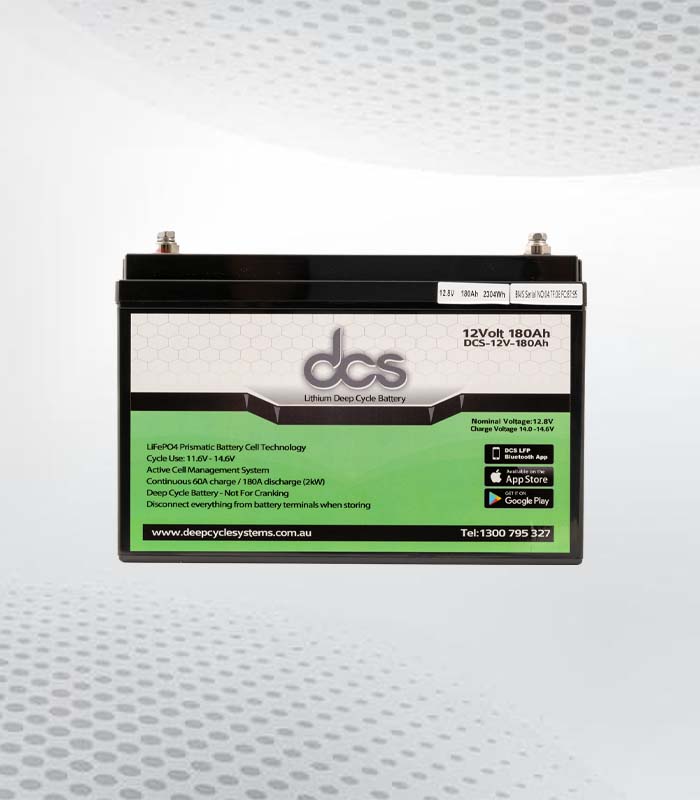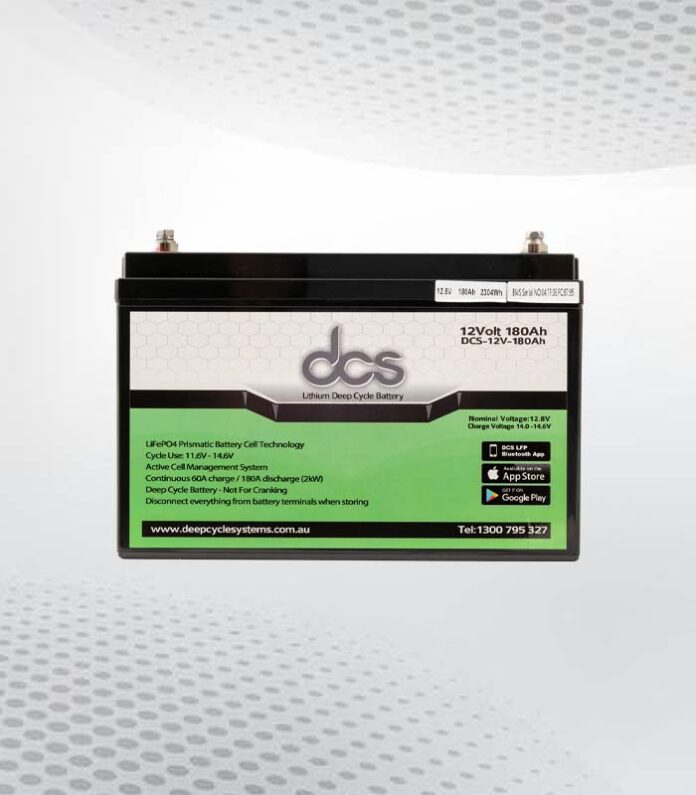Embarking on an adventure is an exhilarating experience, but it also requires careful planning and preparation. One essential aspect of any outdoor excursion is ensuring a reliable power source. This is where deep-cycle batteries come in. These specialized batteries are designed to provide long-lasting and consistent power, making them the perfect companion for outdoor activities. In this blog post, we’ll explore the role of deep cycle batteries and why they are crucial for powering your adventures. So buckle up and get ready to discover the world of deep-cycle batteries!
What Are Deep-Cycle Batteries?
True to their name, deep-cycle batteries are designed to be discharged and recharged (or cycled) deeply, time and time again. While typical car batteries deliver a quick burst of energy for ignition, deep-cycle batteries are built differently. They are designed to provide a steady current over a long duration.
Imagine a marathon runner compared to a sprinter – that’s the difference between deep-cycle and standard starter batteries. Deep-cycle batteries possess thicker lead plates, which enable them to withstand the rigours of deep discharge and recharge cycles without significant damage. They are your go-to energy companions for applications demanding sustained power supply, whether RV travels, boating excursions, or solar power systems.
The depth of discharge (DOD) can be as high as 80% for these sturdy batteries, offering a much larger usable capacity than their conventional counterparts. From your campervan’s fridge to the trolling motor on your boat, deep-cycle batteries keep your adventurous life up and running!
The Inner Workings of a Deep-Cycle Battery
Have you ever wondered what makes a deep-cycle battery tick? Let’s peel back the layers and step inside the fascinating world of their inner workings. At the heart of each deep-cycle battery lies a series of cells composed of lead plates submerged in an electrolyte solution. As the battery discharges, a chemical reaction occurs between the lead plates and the electrolyte, producing electricity. The beauty of deep-cycle batteries is their ability to reverse this process.
When recharged, the chemical reaction is undone, restoring the lead and electrolyte to their original state and preparing the battery for another round of discharge. The key to this regenerative process lies in the thickness and density of the lead plates. Thicker plates translate to longer discharge times and a greater ability to withstand numerous cycles. So, while their power is tangible, the real magic of deep-cycle batteries lies hidden within their intricate chemistry and clever design.
Different Types of Deep-Cycle Batteries
Exploring the family of deep-cycle batteries reveals a fascinating assortment of power-packed siblings, each with unique characteristics. The first, and the original, is the Flooded Lead Acid battery. They are economical and robust, requiring regular maintenance through water top-ups. Next up is the Absorbed Glass Mat (AGM) battery. These maintenance-free wonders use a fibreglass separator to suspend the electrolyte, making them spill-proof and vibration-resistant – a perfect match for high-impact adventures.
Then there’s the Gel battery, another maintenance-free variety where the electrolyte is turned into a gel. They offer exceptional durability and deep discharge recovery. We have the Lithium-Ion deep-cycle batteries. These high-tech marvels are lightweight, compact, and deliver superior performance. They’re more expensive, but their extended lifespan and improved efficiency make them a worthwhile investment. Choosing the right type of deep-cycle battery depends on your specific needs, budget, and the level of maintenance you’re comfortable with.
The Advantages of Using Deep-Cycle Batteries
Let’s turn the spotlight onto the benefits that deep-cycle batteries bring to your adventurous voyages. These robust energy reservoirs provide a continuous, consistent stream of power, keeping your devices running smoothly for extended periods. Deep cycling is their power anthem, with each discharge and recharge cycle imbuing them with a resilience that few other batteries can match. This impressive durability is a trump card when powering demanding applications, whether on the high seas, the open road, or off-grid locales.
It’s not just about muscle, though. Their ability to play well across different scenarios, from solar systems to marine vessels, adds versatility to their charm. Think of them as the multi-tool in your energy toolkit, ready to adapt to your power needs. So, as you set your sights on your next escapade, remember that with a deep-cycle battery, you’ve got a reliable, long-lasting power ally game for any adventure you have in mind.
 Maintenance Tips for a Deep Cycle Battery
Maintenance Tips for a Deep Cycle Battery
Proper maintenance can significantly extend the lifespan of a deep-cycle battery and enhance its performance. A well-cared-for battery is like a loyal friend – always ready to provide reliable, sustained power for your adventures. So, how do you care for your battery buddy? Start by closely monitoring the electrolyte levels, particularly if you’re using a flooded deep cycle battery.
Regular top-ups with distilled water will ensure the battery cells remain submerged and in perfect working condition. Don’t overfill; too much water could cause electrolyte spillage during charging. Keeping your battery clean is equally important. Dust, grime, and corrosion can compromise the battery’s performance and lifespan. Clean the battery top and terminals with baking soda and water to remove any corrosive build-up, and ensure the terminal connections are tight and secure.
Another vital aspect of maintenance involves regular charging. Using a compatible charger, always ensure your battery is fully recharged. However, be careful not to overcharge, which could damage the battery and reduce lifespan. Temperature can also affect a deep-cycle battery’s performance. Keep your battery in a well-ventilated and temperature-controlled environment to ensure optimal functioning. Extreme hot or cold temperatures can stress the battery and impact its efficiency.
Deep-Cycle Batteries and Renewable Energy
Renewable energy systems emerge when the sun shines, and the wind blows. But what happens when the sky turns cloudy or the wind stills? That’s when deep-cycle batteries step up to the plate. These power stalwarts are pivotal in storing the excess energy generated by renewable systems like solar panels or wind turbines. The energy stored during peak production times can then be used when the primary energy source isn’t available or during periods of high demand.
Let’s look at solar power systems, for example. During the day, your solar panels might produce more energy than you need. Instead of letting that energy go to waste, deep-cycle batteries store it for later use. When the sun sets or during periods of heavy usage, the batteries discharge, continuing to power your home with the stored energy. This ebb and flow, this cycle of charging and discharging, is where deep-cycle batteries truly shine.
But it’s not just about the cycle. The resilience of deep-cycle batteries plays a crucial role in renewable energy systems. These batteries can withstand the regular deep discharges that come with the territory of renewable energy storage. Their ruggedness and durability make them the preferred choice for renewable energy systems that require dependable, long-term energy storage.
Deep-Cycle Batteries for Marine Use
Deep-cycle batteries for marine use are essential power sources designed to provide reliable and sustained energy for boats and other watercraft. Unlike traditional starting batteries, deep-cycle marine batteries are optimized to endure repeated and deep discharges, making them ideal for powering trolling motors, electronic equipment, and onboard appliances. These batteries are constructed with robust materials to withstand the harsh marine environment, including resistance to corrosion and vibration.
Discharging deeply without compromising performance ensures a consistent power supply for extended periods, which is crucial for marine activities such as fishing or cruising. Regular maintenance is vital for maximizing the lifespan and efficiency of deep-cycle marine batteries. This includes monitoring electrolyte levels, ensuring proper ventilation, and avoiding overcharging or deep discharging. Choosing the right deep-cycle marine battery based on the vessel’s energy needs is key to ensuring a reliable and efficient power source for various marine applications.
Charging Deep-Cycle Batteries Efficiently
Nurturing the life force of your adventure begins with understanding how to charge your deep-cycle batteries effectively and effectively. The process is more of an art than a chore, and doing it right ensures your power companion remains robust and reliable. Your charger should be a match made in heaven with your battery type.
Pairing the wrong charger with your battery could be like feeding your body the wrong fuel type; it may work, but it could be more efficient. When it comes to the charging process, think of it as a marathon, not a sprint. Rushing can lead to overcharging, a big no-no for deep-cycle batteries. Stage charging is the way to go. Consider it a well-choreographed dance, with each step crucial to the overall performance.
A word of advice: a deep-cycle battery dislikes being left in a discharged state for long. It’s a bit like leaving a friend in the cold – it’s not just rude; it could harm your relationship. Treat your battery with respect, charge it efficiently, and it will reciprocate with reliable, long-lasting power for all your adventures.
FAQ’s
How long do deep-cycle batteries typically last, and what factors influence their lifespan?
The lifespan of deep-cycle batteries can vary based on usage patterns, depth of discharge, maintenance, and the specific type of battery. On average, these batteries can last anywhere from 4 to 8 years. Proper maintenance, avoiding extreme discharges, and ensuring regular charging contribute significantly to extending their lifespan. Regularly checking and maintaining the electrolyte levels in flooded deep-cycle batteries is also crucial.
Can deep cycle batteries be used in starting applications for vehicles and boats?
While deep cycle batteries are designed for sustained discharges, some are specifically engineered for dual-purpose use, catering to deep-cycle and starting applications. These dual-purpose batteries compromise the characteristics of deep-cycle and starting batteries. However, for optimal performance, it is recommended to use a dedicated starting battery for applications where quick bursts of power are essential.
What are the common maintenance practices for deep-cycle batteries?
Routine maintenance is vital for maximizing the performance and lifespan of deep-cycle batteries. This includes regularly checking and topping up electrolyte levels in flooded batteries, ensuring proper ventilation, and cleaning terminals to prevent corrosion. Additionally, it’s crucial to follow the manufacturer’s recommendations for charging practices and avoid overcharging or deep discharging, as these can negatively impact the battery’s health.
How do temperature and environmental conditions affect deep-cycle battery performance?
Temperature plays a significant role in the performance of deep-cycle batteries. Extreme cold can reduce their capacity, while high temperatures can accelerate internal chemical reactions, potentially shortening their lifespan. Storing batteries in a controlled, moderate-temperature environment and following manufacturer guidelines for temperature ranges are essential for optimal performance.
Conclusion
In the grand tapestry of adventure, the unsung hero is the deep-cycle battery, diligently powering your journey. Whether sailing the high seas, road-tripping in an RV, or going off-grid with solar power, these robust energy providers ensure a reliable power supply. And with various types to choose from and essential maintenance tips to keep them at peak performance, your adventures are set to go the distance. Deep-cycle batteries will remain at the heart of sustainable power solutions as we continue to embrace renewable energy sources. Remember, your adventure is only as reliable as the power that drives it!
| Other Good Articles to Read |
| Cme Blog Spot |
| Garcias Blogs |
| Yyc Blogs |
| Guiade Blogs |
| Blogs-Hunt |
| Impact-Blog |
| Smarty Blogs |
| Ed Blog |
| Mo Blogs |
| Blogs Em |
| Blog St |
| Related Business Listings |
| Contact Directory |
| Local Business Profiles |


